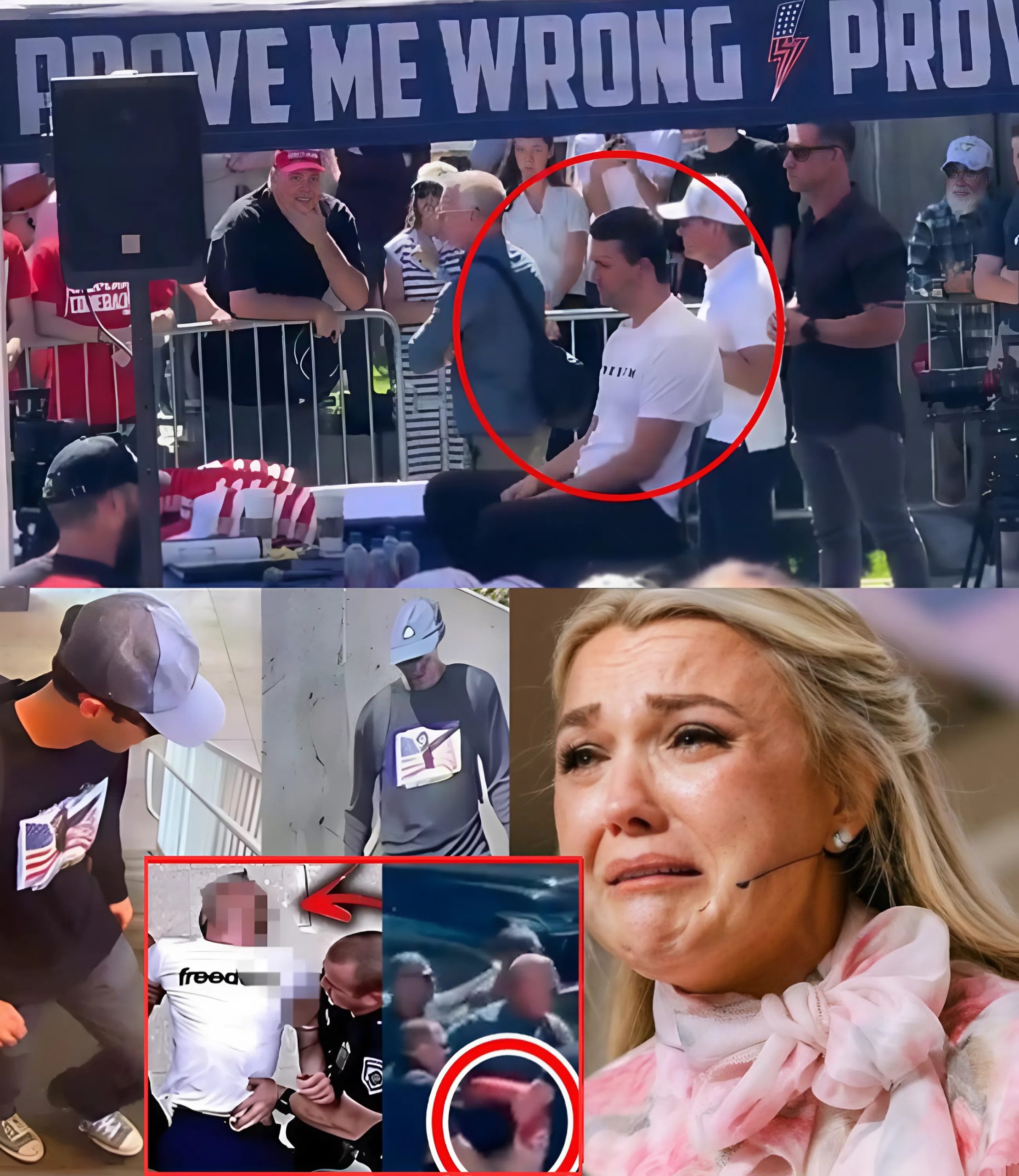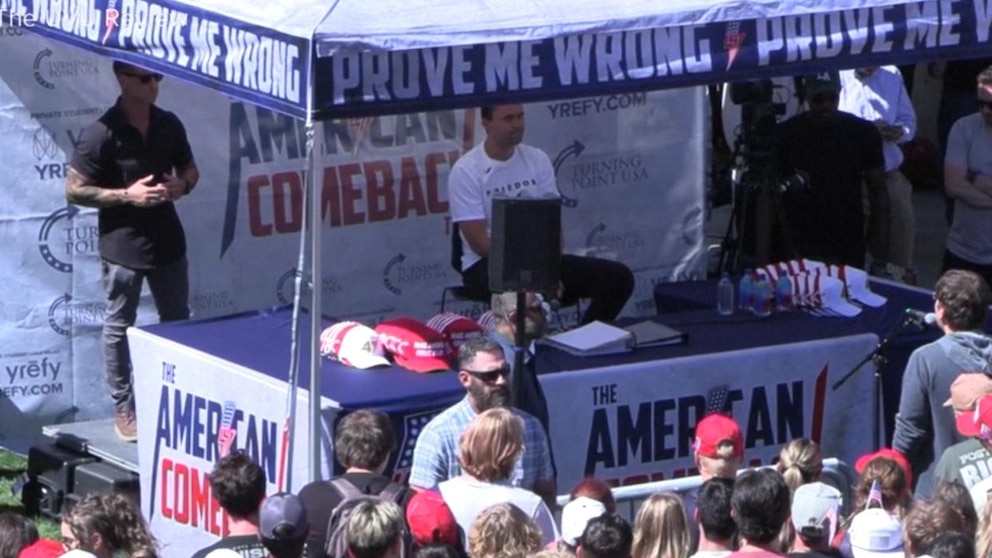By the time the tape reaches the 2:17 mark, listeners are confronted with a silence that feels impossible to dismiss. For nearly twenty seconds, the line goes dead — no instructions, no cries, no sound at all. It is a silence that has become both a mystery and a metaphor, raising questions about what happened in that room and what the public has never been told.
Now, as the leaked audio spreads across social media and underground platforms, America finds itself divided once again — not simply about Charlie Kirk, but about truth, secrecy, and the role of institutions in shaping what we are allowed to know.

The Official Story: A Death Explained but Not Understood
From the moment Kirk’s death was announced, the public was given only the broadest strokes. The phrase “medical emergency” was repeated like a mantra, with no elaboration, no autopsy details, and no clear explanation of events leading up to that night.
For some, this was acceptable — a man had died, and privacy should be respected. For others, the lack of transparency felt like erasure, as though the death of a figure as prominent as Kirk could be neatly folded into silence without consequence.
The release of the 911 audio explodes that neat narrative. Suddenly, the event is no longer an abstraction described in clinical language but a visceral human drama, unfolding second by second, filled with panic, confusion, and questions that official channels have refused to answer.
Breaking Down the Call
The recording begins with frantic urgency. The caller, voice trembling, struggles to communicate details: Kirk is not breathing properly, his condition is deteriorating quickly, and CPR instructions are desperately needed. In the background, faint voices overlap — one man mutters “this isn’t normal” while a woman cries out, “Please, don’t tell me that’s true…”
At 1:30, the dispatcher instructs chest compressions, but the caller hesitates, fumbling. Then comes the infamous moment: the 2:17 silence. No words, no background noise, no dispatcher prompts. Just static emptiness, stretching across the tape like an abyss.
When the audio resumes, the room is chaotic again. Shouts overlap, the dispatcher repeats directions, and someone can be faintly heard arguing, as though decisions are being contested even as Kirk’s condition worsens.

It is not the chaos alone that unsettles listeners, but the silence — a gap that feels deliberate, alien, almost staged.
The Weight of Silence
Silence in an emergency call is never neutral. Experts in forensic audio stress that while muffled sounds, distance, or accidental drops are common, prolonged stretches of complete dead air are highly unusual.
Dr. Marcus Leland, an independent audio analyst, reviewed the file and offered this assessment:
“The 2:17 silence is not just background quiet. It is a total absence of sound, as though the recording was interrupted or redacted. In over two decades of reviewing emergency tapes, I have rarely encountered anything like it without technical manipulation.”
If Leland is correct, then the silence is not an accident but a clue — either of technological tampering or of decisions made by those who now control the narrative.
The Emotional Punch of a Single Phrase
The line most listeners cannot shake is the one uttered just before the silence: “Don’t tell me that’s true…”
The words themselves are ambiguous, but the delivery — cracked, desperate, anguished — suggests the recognition of something final. Some interpret it as the moment Kirk’s loved ones realized he was already gone. Others see it as acknowledgment of a truth larger than death itself: that what was happening was not random, not natural, but the result of something hidden.
In either case, it lingers, haunting the listener with the weight of both grief and suspicion.
Public Response: Outrage, Speculation, and Fear
The leak has ignited fierce debate across political and cultural lines.
Supporters of Kirk point to the silence and the cryptic language as evidence of irregularities, perhaps even foul play. To them, the audio validates long-held suspicions that institutions — whether hospitals, law enforcement, or political actors — are concealing vital details about his death.
Critics, meanwhile, urge caution. They argue that grief-stricken individuals say incoherent things in moments of panic, and technical glitches can easily produce gaps in recordings. To build theories of conspiracy on such fragile ground, they warn, risks politicizing tragedy.
And yet, for ordinary listeners who do not fall neatly into partisan camps, the audio is disturbing for reasons beyond politics. It is a raw, human document of suffering and helplessness, and it forces them to confront the question: why, if there is nothing to hide, has transparency been so aggressively resisted?
Institutional Silence
Perhaps the most telling reaction is not what has been said, but what has not. Authorities have refused to confirm the authenticity of the tape. Police departments have declined comment. Hospitals remain mute, citing privacy laws. And each refusal only deepens suspicion.
Efforts to scrub the audio from online platforms have backfired spectacularly. Every takedown feels to many like proof of suppression, not procedure. The harder institutions try to contain the leak, the more virally it spreads, reinforcing the belief that the truth is being hidden.
Historical Parallels
The leaked audio joins a long history of recordings that altered public perception by revealing what official narratives sought to obscure. From the Nixon tapes to military radio chatter leaked during conflicts, such recordings have often proven to be turning points in the battle between secrecy and transparency.
But what makes this case unique is the intimacy. This is not the voice of a politician caught scheming, but of ordinary people in the midst of extraordinary panic. It is not strategy or scandal on display, but life and death itself — and that makes it harder to dismiss, harder to forget.
The Demand for Answers
Calls for an independent investigation are now louder than ever. Experts want the full, unedited 911 audio released, accompanied by technical analysis that can either confirm or refute allegations of tampering. Families and supporters demand transparency from both medical and law enforcement institutions.
Without such accountability, the risk is clear: conspiracy theories will continue to spread, public trust will erode further, and Kirk’s death will become less a matter of mourning and more a battleground of competing narratives.

The Human Cost
Lost amid the political noise is the human dimension. Charlie Kirk was not just a commentator, but a father, husband, and friend. His loved ones are forced to relive the most painful night of their lives in a public arena, dissected by strangers, weaponized by partisans, scrutinized by analysts.
The leak offers fragments of truth but at a cost: the exposure of private grief to the harsh glare of public debate. It raises ethical questions that have no easy answer. Should the raw cries of a family in crisis be broadcast for the world to hear? Does the pursuit of truth justify such intrusion?
These are questions without resolution, yet unavoidable in a world where secrets rarely stay hidden.
Conclusion: When Silence Becomes the Loudest Sound
The leaked 911 call from the night of Charlie Kirk’s death is more than evidence. It is a symbol. A symbol of secrecy and suspicion, of grief and unanswered questions, of the growing void between official statements and public trust.
The silence at 2:17 may never be fully explained. But it will not be forgotten. It has become the defining image of the case — an absence that speaks louder than words, a reminder that what we are not told often matters more than what we are.
“Don’t tell me that’s true…” Those words, uttered in desperation, echo across the recording and across the nation. Whether they reflect grief, recognition, or revelation, they cut to the core of why this audio matters: because in them, we hear not just the collapse of a man’s life, but the collapse of trust itself.
In the end, the audio forces us to confront a hard truth: silence is never empty. It is full of meaning, full of weight, full of the truths we are not supposed to know. And sometimes, it is in that silence — chilling, unbearable, unforgettable — that the loudest message of all is found.
